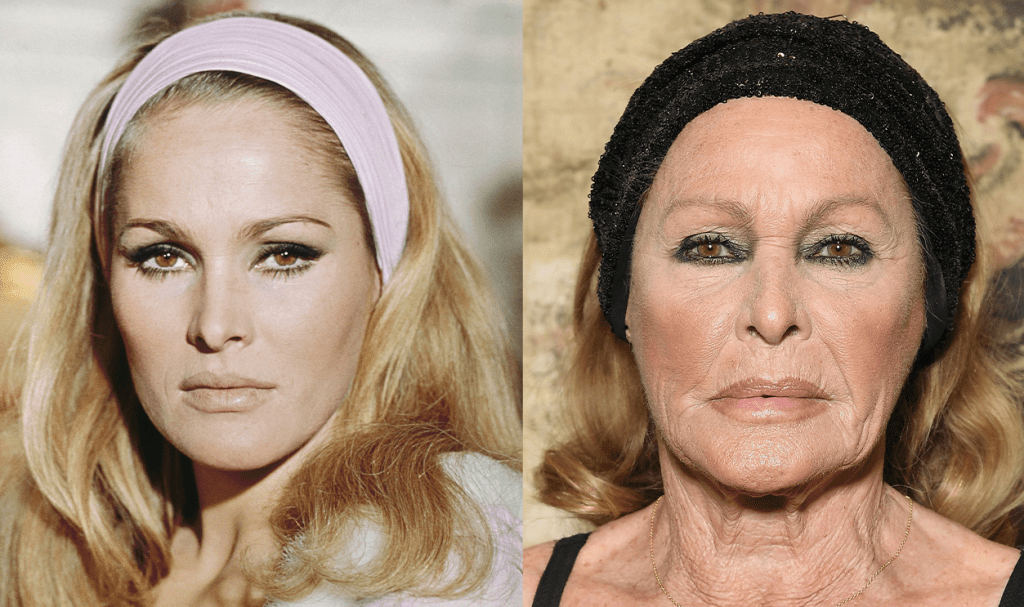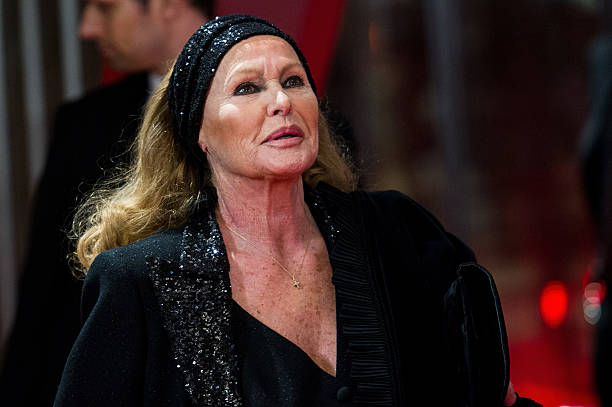Ursula Andress, a celebrated Swiss actress and model, is renowned for her unforgettable roles and captivating beauty. She skyrocketed to international fame as Honey Ryder in the first James Bond film, Dr. No, solidifying her status as a global icon and a defining figure in 1960s cinema. Known for her strong screen presence, Andress’s career spans multiple decades, showcasing not just her groundbreaking Bond role but also a wide array of film projects across Europe and Hollywood. Let’s take a deep dive into Ursula Andress’s life, her path to fame, key accomplishments, and her enduring legacy in the entertainment world.
Early Life: A Multicultural Foundation

Ursula Andress was born on March 19, 1936, in Ostermundigen, near Bern, Switzerland. Growing up in a multilingual family, she learned to speak French, Italian, German, and English fluently from a young age. This rich linguistic background not only enriched her personal life but also proved invaluable in her international career. As the second of six children in a Swiss-German family, her father’s diplomatic career exposed her to diverse cultures, fostering a unique worldview that would later enhance her versatility as an actress.
From an early age, Ursula displayed a keen interest in the arts. She studied in Bern and later attended schools in France and Italy, where her passion for travel, culture, and creativity flourished. Moving to Rome in her late teens, she began exploring a career in the arts. Her striking looks and sophisticated demeanor quickly caught the eye of film producers and photographers, propelling her into the realms of modeling and cinema.
The Path to Fame: Breakthrough in Hollywood

Andress’s journey in the film industry began in Italy, where she appeared in several small films that garnered the attention of European filmmakers. By the mid-1950s, she moved to Hollywood, where her beauty quickly captivated the American film industry. However, it was her role in the 1962 James Bond film Dr. No that catapulted her to international stardom.
In Dr. No, Andress portrayed Honey Ryder, the iconic “Bond girl” who famously emerged from the sea in a white bikini. This moment became one of the most memorable scenes in film history, showcasing not only Andress’s beauty but also establishing her as a symbol of independence and strength. Her portrayal broke new ground for female characters in action films, blending allure with empowerment, resonating with audiences worldwide.
A Global Icon: Success and Versatility
The success of Dr. No transformed Andress into a global icon almost overnight. Her image became synonymous with elegance and allure, and she quickly became a sought-after actress for major film projects. The white bikini she donned in the film became legendary, solidifying her status as an enduring symbol of beauty and style.
Following her breakout role, Ursula Andress starred in various films across different genres, showcasing her versatility and commitment to challenging roles. In 1965, she appeared in She, a British adventure film where she played a powerful queen in a mystical land, further establishing her capability to bring depth and intensity to her characters.
In 1966, Andress took on a notable role in The Blue Max, a World War I drama alongside George Peppard and James Mason. This performance allowed her to explore different facets of her acting abilities, portraying a sophisticated character in a historical context. That same year, she reprised a character reminiscent of Honey Ryder in the parody film Casino Royale, showcasing her playful side and willingness to engage in self-parody.
Personal Life: High-Profile Relationships

Ursula Andress’s personal life often attracted media attention, particularly due to her relationships with high-profile figures in the entertainment industry. She was romantically linked to some of Hollywood’s most famous men, including James Dean and Marlon Brando. In 1957, she married actor and director John Derek, though their marriage ended in divorce in 1966. Despite their split, Andress and Derek remained close friends throughout their lives.
In the 1970s, she entered a relationship with French actor Jean-Paul Belmondo, a romance that garnered significant media coverage. This relationship added to her mystique and solidified her status as an international celebrity.
Later, Andress began a relationship with actor Harry Hamlin, whom she met on the set of Clash of the Titans (1981). The couple welcomed a son, Dimitri, in 1980. Though their relationship eventually ended, they maintained an amicable bond, co-parenting their son and ensuring a stable upbringing.
Enduring Influence and Legacy

Ursula Andress’s impact on popular culture is immense, thanks to her pioneering portrayal of Honey Ryder. Her role in Dr. No laid the foundation for the “Bond girl” archetype, setting a standard for strong, independent female characters in action films. The unforgettable scene of her emerging from the sea in a bikini has been frequently referenced and parodied, remaining a highlight in cinema history.
Throughout her career, Andress exhibited a strong sense of independence and authenticity. She was one of the few actresses of her era to successfully transition between Hollywood and European cinema, reflecting her versatility and global appeal. Her bold career choices often challenged stereotypes, showcasing her depth as an actress.
In recent years, Ursula Andress has opted for a quieter life, stepping back from the limelight. Now residing in Europe, she enjoys her role as a mother and grandmother, focusing on family and personal pursuits. Although she has largely retired from acting, her influence on the film industry remains significant. Andress occasionally appears at film festivals and retrospectives, where she is celebrated as a trailblazer and a style icon.
Conclusion: The Legacy of Ursula Andress

Ursula Andress’s life and career offer a fascinating portrait of a woman who defied conventions and embraced her uniqueness, leaving an indelible mark on cinema. From her early days in Switzerland to her rise as an international film star, her journey embodies resilience, passion, and artistry.
As we reflect on Ursula Andress’s legacy, it’s evident that her influence transcends her roles and beauty. She is celebrated not only as a legendary actress but also as a pioneer who opened doors for future generations of women in film. Her story is one of timeless allure, making Ursula Andress a name that will continue to be cherished and admired for years to come.


